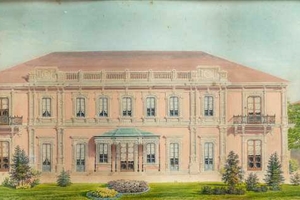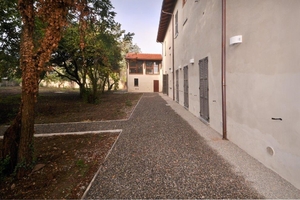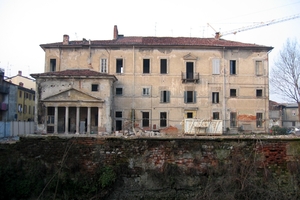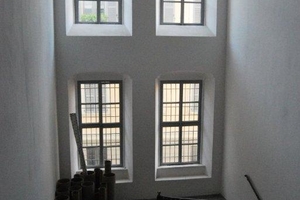'600 - '700
From 1535 to 1713 Milan was occupied by the Spaniards: the status of “occupied territory” continued, with changing fortunes, after the War of the Spanish Succession (1701–1714), and also with the Austrian occupation, until the Second Italian War of Independence, although with the short period of Napoleonic occupation. For this reason, Milan probably holds the Italian record for longest foreign occupation.
The restoration works we are presenting concern monuments built between the XVII and XVIII century up to the Napoleonic Era. During these years the town shows, in sync with the Western world, the distinguishing Baroque and Neoclassic features, often with local and original characteristics: a rich period of aesthetic and technical innovations regarding materials, construction techniques and new decorative setups.
A slow but gradual urban development, initially contained inside the town walls wanted by Charles V, participated to the development of the major works altready started at the end of the XVI century , like the Seminario Vescovile (the Bishopric Seminary), Brera Palace, the Collegio Elvetico (the Swiss School), and the continuation of other works such as the Duomo - Milan cathedral - always at the core of the architectural debate - the Cà Granda and the massive realization of hydraulic works aiming to complete and improve Navigli (Milan canal system) waterways. The town was filled with a constellation of new aristocratic buildings, such as Palazzo Litta, Palazzo Dugnani, and new churches like Sant’Alessandro, Santa Maria alla Porta, San Bernardino alle Ossa and San Vito al Pasquirolo.
In the late XVIII century, after a long period of peace and knowledgeable and steady administration, Milan was considered a farsighted town, driven by his economic and cultural growth. The heritage of this period can be seen in significant artworks such as, among others, the Rotonda della Besana, the Scala, Palazzo Reale, Palazzo Cusani, Palazzo Clerici, Villa Belgiogioso, Palazzo Serbelloni, the Arena Civica and also the first public green areas among which we have to mention the important compound of Villa Reale in Monza.
Arch. Libero Corrieri
Commission for the Architectural and Landscape Heritage of Milan
Highlights

L’immobile oggetto del presente progetto è di origine seicentesca, con ampliamenti e trasformazioni nei secoli successivi, fino all’attuale assetto di definizione ottocentesca. Le superfici hanno risentito nel tempo di numerosi interventi di manutenzione che hanno modificato materiali di finiture e cromie.
Read more »

The renovation works of Mora palace aimed at turning it into the new town hall.
The building is located in the historic centre of Pantigliate and is prior to 1720, probably dating back to 15th century in its original layout.
Read more »

Palazzo Pirola-Freganeschi è collocato dirimpetto a palazzo Sola-Busca sulla sponda opposta del Naviglio Martesana. L’edificio, come apprendiamo dalla relazione storica allegata al decreto di vincolo del Ministero dei beni culturali del 31 maggio 2001 costituisce una delle residenze signorili settecentesche più significative del Comune di Gorgonzola”. Nel marzo del 2005 per poter redarre un dettagliato progetto di restauro delle superfici si è effettuata una vasta campagna d’indagini stratigrafiche. I numerosi saggi effettuati all’interno dei locali dell’immobile hanno evidenziato che siamo in presenza di un edificio storico assai interessante che ha subito nei secoli numerose modifiche. L’indagine storico-materica ha permesso d’identificare il perimetro delle stanze del palazzo prima dell’innalzamento di tavolati negli ultimi 50 anni.
Read more »

The Laudense Library is located in the historical centre of Lodi and it safeguards the charming Library of the confraternity of the Filippini.
The aim of the renovation was to increase the value of the place, making it welcoming and functional, and blending the aesthetic characteristics with the materials used, thus transforming the library spaces into a fascinating spot.
Read more »








